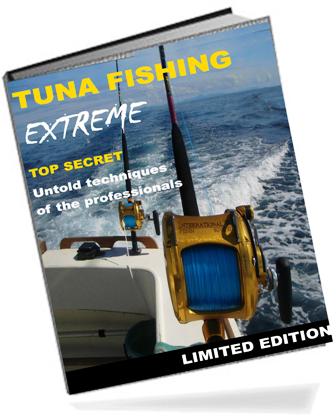Although commonly called arctic bonito, the skipjack tuna is not a bonito and does not venture into arctic waters. This member of the Scombridae family is an esteemed light-tackle species and has great commercial value.
Other Names
skipjack, ocean bonito, arctic bonito, striped tuna, watermelon tuna; French: benite à ventre raye; Hawaiian: aku; Italian: tonnetto striato; Japanese: katsuo; Portuguese: gaiado, listão, listado; Spanish: bonito ártico, barrilete, listado.
Identification
The presence of stripes on the belly and the absence of markings on the back are sufficient to distinguish the skipjack tuna from all similar species. The top of the fish is a dark purplish-blue, and the lower flanks and the belly are silvery and have four to six prominent, dark, longitudinal stripes. The first dorsal fin has 14 to 16 spines, and the pectoral and the ventral fins are short. The body is scale- less, except on the corselet and along the lateral line.
This fish has no swim bladder. On each side of the caudal peduncle is a strong lateral keel. There are roughly 30 to 40 small conical teeth in each jaw. The teeth are smaller and more numerous than those of bonito and are unlike the triangular, compressed teeth of the mackerel. There are 53 to 63 gill rakers on the first arch, more than in any other species of tuna except the slender tuna (Allothunnus).
 |
| Skipjack Tuna (Katsuwonus pelamis) |
Size/Age
Skipjack tuna can attain a maximum of 40 to 45 inches in length but are commonly between 16 and 28 inches long and weigh from 5 to 15 pounds. The all-tackle world record is 45 pounds, 4 ounces. They may live for 12 years.
Life history/Behavior
In the western Atlantic, skipjack tuna frequently school with blackfin tuna. Skipjack tuna reach sexual maturity at about 18 to 20 inches in length. Spawning occurs in spurts throughout the year in tropical waters and from spring to early fall in subtropical waters.
 |
| Tuna fishing guide |
Food and feeding habits
This gregarious, fast-swimming fish feeds near the surface, and its diet consists of herring, squid, small mackerel and bonito, lanternfish, shrimp, and crustaceans.
Distribution/Habitat
Skipjack tuna are cosmopolitan in tropical and subtropical seas, usually in deep coastal and oceanic waters. They are common throughout the tropical Atlantic south to Argentina and may range as far north as Cape Cod, Massachusetts, in the summer months. A pelagic, migratory, deep-water species, the skipjack tuna may form schools composed of 50,000 or more individuals, which makes it a prime target for commercial fishermen using purse seines.


